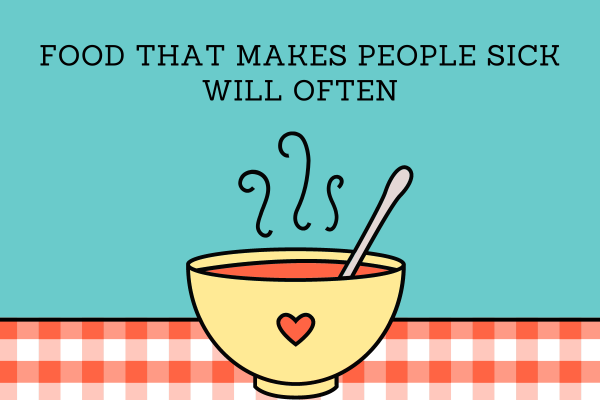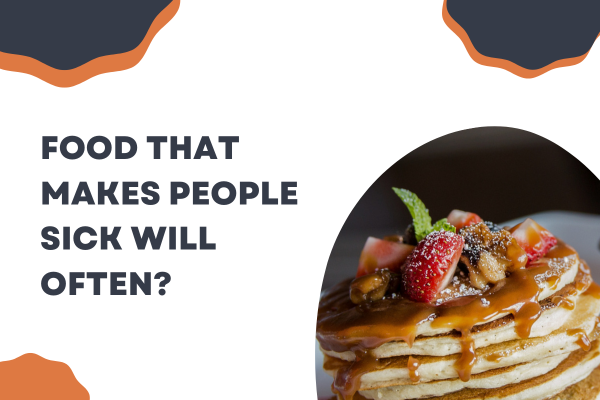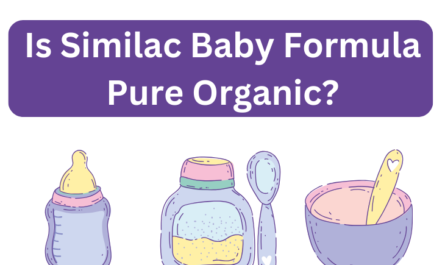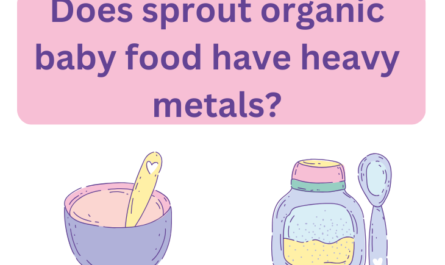Introduction: Food That Makes People Sick Will Often
Food is an essential part of our daily lives, providing us with nourishment, pleasure, and energy. However, not all food is created equal, and some can have negative effects on our health. In fact, food that makes people sick will often lead to various illnesses and discomfort. In this comprehensive guide, we will explore the types of food that can make people sick, the reasons behind their harmful effects, and how to protect ourselves from these potential dangers. So, let’s delve into the world of foodborne illnesses and discover what we need to know to stay healthy and safe.
Food That Makes People Sick Will Often: Exploring the Culprits
Food that makes people sick will often encompass a wide range of items that can harbor harmful bacteria, viruses, parasites, or toxins. Let’s take a closer look at some common culprits:
1. Undercooked Meat: A Recipe for Disaster
Undercooked meat, such as raw or rare beef, pork, poultry, or fish, can pose a significant risk to our health. These foods may contain bacteria like Salmonella, E. coli, or Campylobacter, which can lead to food poisoning. It’s crucial to ensure that meat is cooked to the appropriate internal temperature to kill any harmful pathogens.
2. Unpasteurized Dairy Products: Proceed with Caution
Unpasteurized dairy products, including milk, cheese, and yogurt, have not undergone the process of pasteurization, which involves heating the product to kill bacteria and other microorganisms. Consuming unpasteurized dairy can expose us to harmful pathogens like Listeria, E. coli, or Salmonella.
3. Raw Eggs: Crack with Care
While eggs are a nutritious and versatile ingredient, they can also harbor Salmonella bacteria. Consuming raw or undercooked eggs, whether in dishes like Caesar salad dressings or homemade mayonnaise, can increase the risk of foodborne illness. It’s essential to ensure eggs are cooked thoroughly to eliminate any potential pathogens.
4. Seafood: From the Ocean to Your Plate
Seafood, including fish, shellfish, and crustaceans, can sometimes be a source of foodborne illnesses. Contamination may occur during harvesting, processing, or improper storage. Vibrio, Norovirus, and Hepatitis A are some of the pathogens associated with seafood-related illnesses. It’s crucial to handle and cook seafood properly to reduce the risk of infection.
5. Fresh Produce: Nature’s Bounty, but Beware
Fresh produce, such as fruits and vegetables, is an essential part of a healthy diet. However, they can also carry harmful bacteria like Salmonella, E. coli, or Cyclospora. Contamination can occur at any stage, from farming to preparation. Thoroughly washing and properly handling produce can help minimize the risk of foodborne illnesses.
Why Does Food That Makes People Sick Will Often Affect Us?
Understanding the reasons behind the harmful effects of certain foods can help us make informed choices and reduce the risk of falling ill. Let’s explore some key factors:
1. Bacteria: Tiny Terrors
Bacteria are microscopic organisms that can thrive in various environments, including food. Some bacteria produce toxins that can cause illness when ingested. Examples include Salmonella, Campylobacter, and Staphylococcus aureus. These bacteria can multiply rapidly under favorable conditions and may not alter the appearance, taste, or smell of the food they contaminate.
2. Viruses: Sneaky Invaders
Viruses are another group of microorganisms that can cause foodborne illnesses. Unlike bacteria, they require a host to multiply. Common foodborne viruses include Norovirus, Hepatitis A, and Rotavirus. These viruses can survive in food and water, making them potential sources of infection.
3. Parasites: Uninvited Guests
Parasites are organisms that live in or on another organism, relying on their host for survival. Foodborne parasites, such as Trichinella spiralis and Cryptosporidium parvum, can cause severe illnesses. These parasites can be present in contaminated meat, water, or fresh produce, and their ingestion can lead to various health problems.
4. Toxins: Hidden Dangers
Toxins are substances produced by certain bacteria, molds, or plants that can be harmful to humans when consumed. Examples include toxins produced by Clostridium botulinum (causing botulism) and toxins found in poisonous mushrooms. Proper handling, storage, and preparation of food are essential to prevent toxin-related illnesses.
How to Protect Yourself: Tips for Food Safety
Now that we have identified some common food culprits and explored the reasons behind their harmful effects, it’s time to arm ourselves with practical tips for ensuring food safety. By following these guidelines, we can minimize the risk of falling victim to foodborne illnesses:
1. Cleanliness is Key
Maintaining proper hygiene is crucial when handling and preparing food. Wash your hands thoroughly with soap and water before and after handling food, especially raw meat, poultry, or seafood. Clean and sanitize kitchen surfaces, utensils, and cutting boards regularly to prevent cross-contamination.
2. Cook with Confidence
Proper cooking temperatures are essential to kill harmful bacteria, viruses, and parasites. Use a food thermometer to ensure that meat, poultry, fish, and eggs reach the recommended internal temperatures. Avoid consuming undercooked or raw foods, as they can be a breeding ground for pathogens.
3. Separation for Safety
To prevent cross-contamination, keep raw meat, poultry, seafood, and their juices separate from other foods. Use separate cutting boards and utensils for different food items. Store raw and cooked foods separately in the refrigerator to avoid potential contamination.
4. Chill to Preserve
Maintaining proper storage temperatures is crucial for preserving food freshness and safety. Keep perishable foods refrigerated at temperatures below 40°F (4°C). Thaw frozen foods in the refrigerator, cold water, or the microwave, rather than at room temperature. Promptly refrigerate leftovers and consume them within a safe timeframe.
5. Be Cautious with High-Risk Foods
Certain foods have a higher risk of causing foodborne illnesses. These include raw or undercooked eggs, raw sprouts, unpasteurized dairy products, and raw or undercooked meat, poultry, or seafood. Exercise caution when consuming these foods, especially if you have a weakened immune system.
6. Stay Informed
Stay up to date with food recalls and alerts issued by regulatory agencies. These notifications provide valuable information about potentially contaminated products and can help you avoid consuming unsafe food.
Frequently Asked Questions (FAQs)
FAQ 1: How do I know if I have food poisoning?
If you experience symptoms such as nausea, vomiting, diarrhea, abdominal pain, fever, or chills after consuming food, you may have food poisoning. These symptoms can vary depending on the type of pathogen involved. It’s essential to seek medical attention if symptoms are severe, persistent, or if you have underlying health conditions.
FAQ 2: Can I prevent foodborne illnesses by washing fruits and vegetables?
Washing fruits and vegetables is an essential step in reducing the risk of foodborne illnesses. However, it’s important to note that washing alone may not eliminate all pathogens. Use clean running water and gently rub the produce to remove dirt and potential contaminants. Peeling or cooking fruits and vegetables can further reduce the risk.
FAQ 3: Is it safe to consume raw seafood?
Raw seafood, such as sushi or sashimi, can carry foodborne pathogens. However, certain types of seafood, like sashimi-grade fish, may undergo special processing to ensure safety. It’s crucial to source seafood from reputable suppliers and restaurants that follow strict hygiene and quality standards. If you’re unsure, opt for cooked seafood to minimize the risk.
FAQ 4: Can I rely on the expiration date on food packages?
Expiration dates provide guidance on food quality and safety. However, it’s important to use your senses and judgment when assessing food freshness. If a food appears discolored, has an unusual odor, or shows signs of spoilage, it’s best to discard it, even if the expiration date hasn’t passed. When in doubt, it’s better to be safe than sorry.
FAQ 5: Are children and older adults more susceptible to foodborne illnesses?
Children, older adults, pregnant women, and individuals with weakened immune systems are more vulnerable to foodborne illnesses. Their immune systems may not be as robust in fighting off pathogens. Extra caution should be exercised when preparing and serving food to these groups to minimize the risk of infections.
FAQ 6: What should I do if I suspect food poisoning?
If you suspect food poisoning, it’s important to seek medical attention, especially if symptoms are severe or prolonged. Your healthcare provider can evaluate your symptoms, conduct necessary tests, and provide appropriate treatment. It’s also essential to report the incident to your local health department to help prevent further cases and identify potential sources of contamination.
Conclusion
Food that makes people sick will often be found in various forms, from undercooked meat to contaminated produce. By understanding the culprits behind foodborne illnesses and adopting proper food safety practices, we can protect ourselves and our loved ones from the potential dangers. Remember to prioritize cleanliness, cook food thoroughly, separate raw and cooked items, and stay informed about recalls and alerts. With these precautions in place, we can enjoy our meals without compromising our health.
Visit the link to read more:
https://family-fitness-fun.com/family-food-and-travel-tamingtwins/





